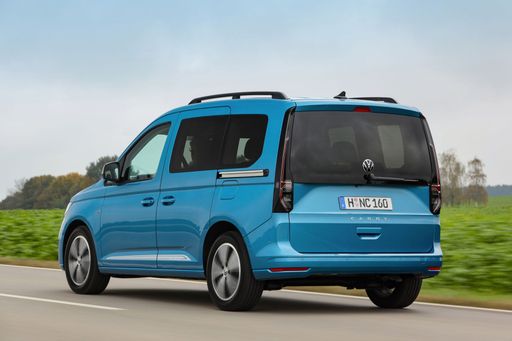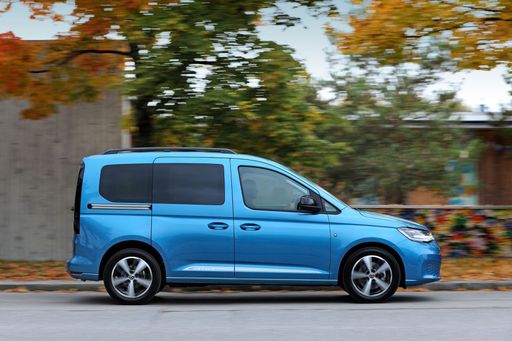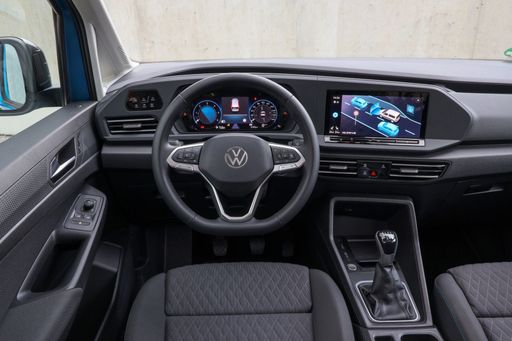VW Caddy vs Mitsubishi Outlander – Which model is better for everyday use?
Compare performance, boot capacity, efficiency and price at a glance.
Find out which car is the better choice for you – VW Caddy or Mitsubishi Outlander?
Costs and Efficiency:
Looking at overall running costs, both models reveal some interesting differences in everyday economy.
VW Caddy has a convincingly advantage in terms of price – it starts at 27800 £, while the Mitsubishi Outlander costs 42800 £. That’s a price difference of around 15089 £.
Fuel consumption also shows a difference: VW Caddy manages with 0.50 L and is therefore significantly more efficient than the Mitsubishi Outlander with 0.80 L. The difference is about 0.30 L per 100 km.
As for range, the VW Caddy performs clearly perceptible better – achieving up to 121 km, about 36 km more than the Mitsubishi Outlander.
Engine and Performance:
Power, torque and acceleration say a lot about how a car feels on the road. This is where you see which model delivers more driving dynamics.
When it comes to engine power, the Mitsubishi Outlander has a significantly edge – offering 306 HP compared to 150 HP. That’s roughly 156 HP more horsepower.
In acceleration from 0 to 100 km/h, the Mitsubishi Outlander is convincingly quicker – completing the sprint in 7.90 s, while the VW Caddy takes 11.40 s. That’s about 3.50 s faster.
In terms of top speed, the VW Caddy performs hardly perceptible better – reaching 186 km/h, while the Mitsubishi Outlander tops out at 170 km/h. The difference is around 16 km/h.
Space and Everyday Use:
Cabin size, boot volume and payload all play a role in everyday practicality. Here, comfort and flexibility make the difference.
Seats: VW Caddy offers noticeable more seating capacity – 7 vs 5.
In curb weight, VW Caddy is distinct lighter – 1575 kg compared to 2070 kg. The difference is around 495 kg.
In maximum load capacity, the VW Caddy performs decisively better – up to 3700 L, which is about 2296 L more than the Mitsubishi Outlander.
When it comes to payload, VW Caddy to a small extent takes the win – 710 kg compared to 595 kg. That’s a difference of about 115 kg.
Who wins the race?
The VW Caddy proves to be is largely superior and therefore becomes our DriveDuel Champion!
VW Caddy is the better all-rounder in this comparison.

VW Caddy
VW Caddy
The VW Nutzfahrzeuge Caddy Hochdach-Kombi is a versatile choice for those seeking extra space and practicality in their everyday vehicle. With its functional high roof and adaptable interior, it easily accommodates both passengers and cargo. The Caddy also stands out with its modern design and features aimed at providing comfort and convenience on the road.
details @ vwpress
@ vwpress
 @ vwpress
@ vwpress
 @ vwpress
@ vwpress
 @ vwpress
@ vwpress
Mitsubishi Outlander
The Outlander continues to impress with its spacious interior and versatile seating options, making it a top choice for families on the go. With its sleek design and thoughtful features, this SUV effortlessly combines style and practicality, ensuring a comfortable ride for all passengers. Additionally, the Outlander's advanced safety technologies provide peace of mind, making it a reliable companion for both daily commutes and weekend adventures.
details

|
|
|
|
|
Costs and Consumption |
|
|---|---|
|
Price
27800 - 45900 £
|
Price
42800 - 51000 £
|
|
Consumption L/100km
0.5 - 6.9 L
|
Consumption L/100km
0.80 L
|
|
Consumption kWh/100km
-
|
Consumption kWh/100km
-
|
|
Electric Range
116 - 121 km
|
Electric Range
83 - 85 km
|
|
Battery Capacity
19.70 kWh
|
Battery Capacity
-
|
|
co2
10 - 165 g/km
|
co2
19 g/km
|
|
Fuel tank capacity
50 L
|
Fuel tank capacity
53 L
|
Dimensions and Body |
|
|---|---|
|
Body Type
High Roof Estate
|
Body Type
SUV
|
|
Seats
5 - 7
|
Seats
5
|
|
Doors
5
|
Doors
5
|
|
Curb weight
1575 - 1998 kg
|
Curb weight
2070 - 2120 kg
|
|
Trunk capacity
-
|
Trunk capacity
495 L
|
|
Length
4500 - 4853 mm
|
Length
4719 mm
|
|
Width
1855 mm
|
Width
1862 mm
|
|
Height
1819 - 1860 mm
|
Height
1746 - 1750 mm
|
|
Max trunk capacity
2556 - 3700 L
|
Max trunk capacity
1404 L
|
|
Payload
501 - 710 kg
|
Payload
545 - 595 kg
|
Engine and Performance |
|
|---|---|
|
Engine Type
Petrol, Diesel, Plugin Hybrid
|
Engine Type
Plugin Hybrid
|
|
Transmission
Manuel, Automatic
|
Transmission
-
|
|
Transmission Detail
Manual Gearbox, Dual-Clutch Automatic
|
Transmission Detail
-
|
|
Drive Type
Front-Wheel Drive, All-Wheel Drive
|
Drive Type
All-Wheel Drive
|
|
Power HP
102 - 150 HP
|
Power HP
306 HP
|
|
Acceleration 0-100km/h
11.4 - 14 s
|
Acceleration 0-100km/h
7.90 s
|
|
Max Speed
173 - 186 km/h
|
Max Speed
170 km/h
|
|
Torque
220 - 320 Nm
|
Torque
-
|
|
Number of Cylinders
4
|
Number of Cylinders
4
|
|
Power kW
75 - 110 kW
|
Power kW
225 kW
|
|
Engine capacity
1498 - 1968 cm3
|
Engine capacity
2360 cm3
|
General |
|
|---|---|
|
Model Year
2024
|
Model Year
2025
|
|
CO2 Efficiency Class
E, F, B
|
CO2 Efficiency Class
B
|
|
Brand
VW
|
Brand
Mitsubishi
|
Is the VW Caddy offered with different drivetrains?
Available configurations include Front-Wheel Drive or All-Wheel Drive.
The prices and data displayed are estimates based on German list prices and may vary by country. This information is not legally binding.
